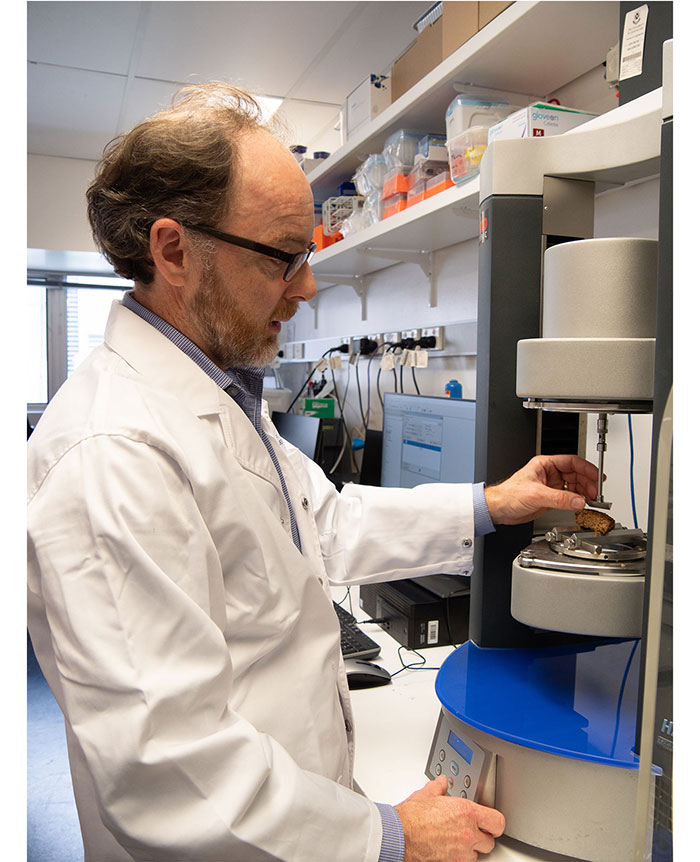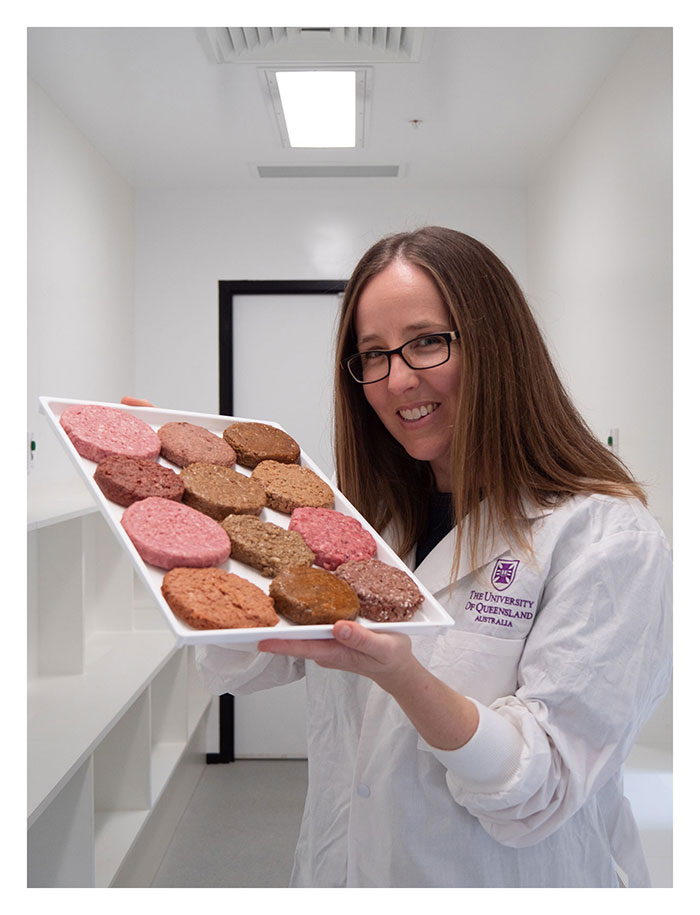How do you recreate the taste, texture and overall experience of biting into a juicy plant-based burger? Believe it or not, the science behind the physical properties of food and how it leads to different sensory experiences does not currently exist. That’s why we’re partnering with the University of Queensland (UQ) to answer this question.
This culinary quest is part of a three-year Australian Research Council project to better understand the sensory experience around the taste and texture of plant-based foods. While previous approaches relied on trial and error to measure these sensory inputs, this project will develop new sciences that uncover novel insights for measuring the physics, physiology and sensory experiences of eating food.

Ultimately, UQ’s work will help the bridge knowledge-gap in what happens to food at the material level—from the first bite of a burger to how it breaks down and dissolves in the mouth. Professor Jason Stokes and Associate Professor Heather Smyth are leading this work at the university, and will bring their expertise in chemical engineering and nutritional food science to the project. They are also working alongside Professor Louw Hoffman, Professor of Meat Science, who has a deep understanding of the material properties of meat.
I spoke to them about their hopes and goals for this project—and here’s what they had to say.
Motif Team (MT): Congratulations on winning a grant to dive deeper into this important research. Recreating the taste, texture and experience of biting into a juicy beef burger using plant-based proteins is the Holy Grail of 21st century food science. Motif FoodWorks and UQ have worked together in this area before, so it’s great that we can cement our relationship by partnering to tackle big industry challenges around plant-based foods.
Jason Stokes (JS): It’s exciting to work with Motif, especially since your team includes a bevy of academics from around the world. We started this adventure when I was in the industry about 15 years ago and it continued when I joined UQ. We wrote influential pieces about how food is transformed during the eating process—this is something that no one really focused on before and now we’re uncovering new techniques to examine that. Collaborating with Heather Smyth is really the step change because we can bring in a more sensory angle.

Heather Smyth (HS): We’ve been doing a lot of work to understand how functional ingredients can change and how we can modify them to create a more pleasurable eating experience for consumers. We have a unique offering here, with both a fundamental understanding of human oral physiology and sensory science, as well as the chemical engineering, structural or physical properties of food.
MT: Consumer demand for plant-based food is rising steadily, but the food industry has struggled in providing a plant-based experience that emulates the overall taste, texture, and aroma of meat. Why is this so challenging for plant-based proteins?
HS: Well, they’re not meat proteins to start with! They don’t functionally behave the same way that meat proteins do. So, they don’t release juiciness like a beef burger does or break down in the same way. And they don’t have that elastic quality when you’re eating a meat burger. We need to understand why they’re different, how they’re different and what consumers are really looking for from meat alternative products.
MT: How will this grant help uncover the differences between plant-based proteins and meat, especially in how they behave in foods we love to enjoy like burgers?
JS: As we eat food, we chew it, it interacts with saliva, it breaks down and that food is transformed quite dramatically. My research tries to understand that process in a mechanical sense and how that links to our sensory perception of the food, both in texture and taste. What is it that’s different about the structure in the product that leads to a difference in perception? If we can get a better handle on that, then we can deliver a seamless sensory experience and emulate as many features as possible with plant-based meat.
MT: In many ways this research grant is quite timely as consumer demand for plant-based foods has been rising steadily for the past few years, as has the global population and awareness of the global climate crisis. Why do you think people are adopting more meat alternatives into their diet and will consumers’ desires help drive it forward?
HS: Certainly, there’s a strong consumer drive for food products that are more sustainable and allow us to make choices that are better for the environment. Let’s say there’s a protein shortage in the future if our population doubles as is predicted, we still need to feed all those people and they’ll want to eat something that’s both sustainable and delicious.
JS: This grant is exciting because it’s focused on plant-based foods. One of the biggest challenges in research is that consumers are driving this desire to be more focused around sustainability. This project is aimed at the most commonly eaten foods and trying to understand what makes meat products so interesting. What is in the structure of meat that leads to a different sensory presence and why are we attracted to it? We want to keep a similar eating experience but with alternative proteins.
MT: This is a three-year research project, where do you hope to be by the end of it?
JS: I expect that the knowledge and insights we generate will be used by Motif to make better plant-based foods. We will generate new knowledge that’s not been previously available and expanding that knowledge base into the sector is really important. We also want to train the next generation to think creatively and make a step change for companies in the food sector.
HS: In the short term, I really hope that we’re able to make some real breakthroughs in understanding how to modify and change plant proteins in a way that makes them just as good as meat. It’s going to take some breakthroughs in understanding how to make plant proteins as delicious as their animal counterparts. Together, UQ and Motif are working hard to develop a plant protein a sustainable option that meets high consumer standards.
Read more about Motif’s work with the University of Queensland team.